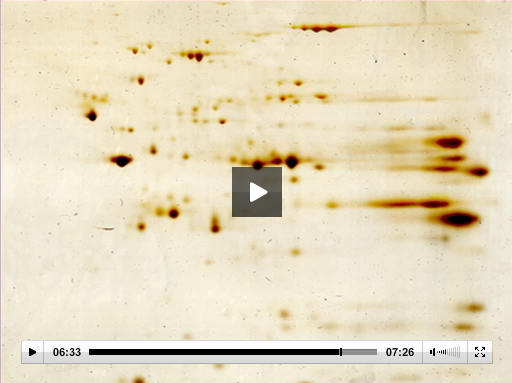Thank you for checking out our “30 days of Science Education” series. Use Science Education videos to introduce undergraduates to the lab.
We kicked off our "30-days of Science Education" series with DNA Gel Electrophoresis. ...And now gel electrophoresis is back again with SDS-PAGE!
 The "P" in PAGE,
polyacrylamide, is a polymer that forms a very regular matrix through which proteins can move. The more concentrated the gel is, the slower the proteins will traverse across it when exposed to an electric field.
The "P" in PAGE,
polyacrylamide, is a polymer that forms a very regular matrix through which proteins can move. The more concentrated the gel is, the slower the proteins will traverse across it when exposed to an electric field.
Sodium Dodecyl Sulfate Poly-Acrylamide Gel Electrophoresis is a technique used by researchers to separate mixtures of proteins by size. Successful completion of this technique is an essential first step for many methods of protein analysis, like immunoblotting. By itself, it is a useful tool in assessing protein size and purity.
 When electrophoresis is complete, the cassette is removed and opened to expose the gel. The gel can then be stained with a typical protein stain, such as coomassie blue or silver stain, to visualize the protein bands within the gel.
When electrophoresis is complete, the cassette is removed and opened to expose the gel. The gel can then be stained with a typical protein stain, such as coomassie blue or silver stain, to visualize the protein bands within the gel.
In their JoVE video, Pouring and Running a Protein Gel by reusing Commercial Cassettes, researchers from the labs of the University of Florida introduce a way to reuse commercial cassettes for running SDS-PAGE gels in order to reduce the cost of performing such daily experiments. Their technique is an example of one of the five application videos accompanying each of our Science Education techniques.
We hope that you enjoy learning how to preform SDS-PAGE as well as about the technique's role in everyday laboratory experiments!

